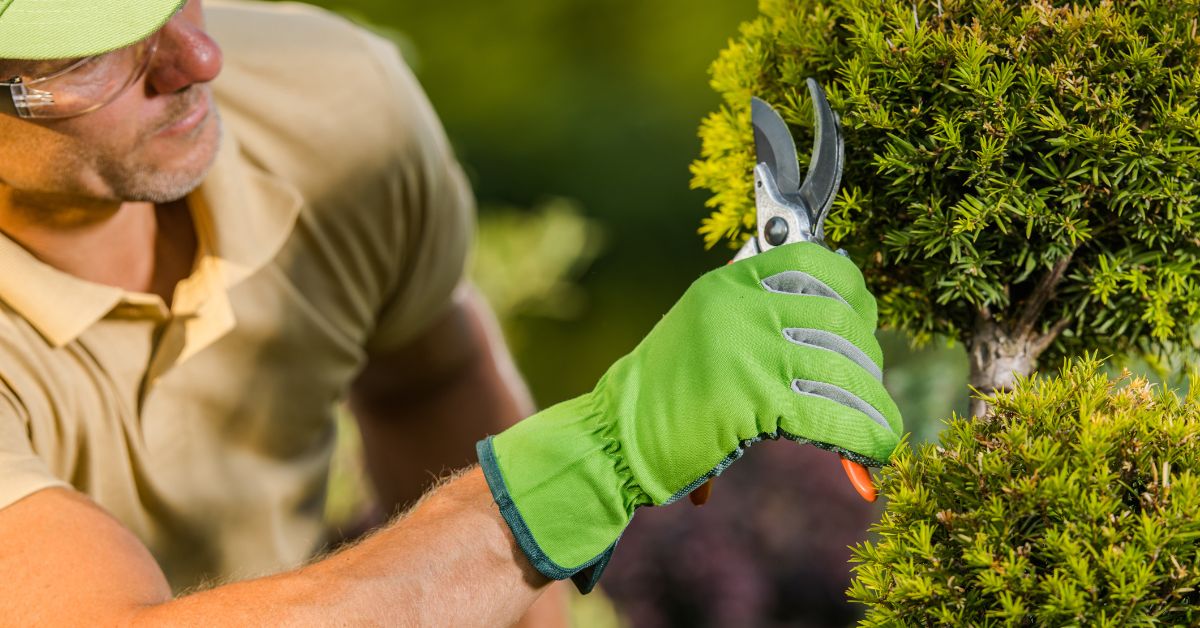Taking care of trees and shrubs doesn’t have to be a huge project. Most people think it means hours of clipping or hiring help, but the truth is, it’s a lot easier when you know the basics. The goal is to keep plants healthy, safe, and neat without spending all weekend outside. If you stick to simple routines and use the right tools, your yard can look cared for without a ton of effort.
Why Trees and Shrubs Need Regular Care
Trees and shrubs aren’t just decorations. They give shade, block wind, and make the whole yard look better. But if they’re ignored, they can get messy fast. Overgrown branches might block sidewalks or hit the roof. Shrubs that are too thick can trap bugs or stop air from moving through your garden. Regular care keeps plants strong and helps avoid bigger problems later.
Even small things like trimming dead branches or shaping a shrub once a season can make a big difference. Think of it as quick upkeep instead of giant projects that eat up your weekend.
Knowing the Right Time to Prune
One of the biggest parts of tree and shrub care is pruning, which just means cutting back branches. Timing matters more than most people realize. If you cut at the wrong time, you could slow growth or stress the plant.
- Trees that bloom in spring are usually pruned right after flowers fade.
- Summer and fall bloomers should be trimmed in late winter or early spring before new growth starts.
- Shrubs often do well with a light trim once or twice a year to keep their shape.
The good news is you don’t need to follow strict rules for every plant. Just avoid cutting during extreme heat or freezing cold, because plants are already stressed during those times.
The Tools That Make It Easier
You don’t need a whole shed full of tools to take care of your yard. A few basics can handle almost every job. Hand pruners are great for small twigs. Loppers work well for branches that are a little thicker. A simple hand saw can help with bigger cuts.
But sometimes branches are too thick or too high to deal with safely using small tools. That’s when something more powerful helps. If you ever have to cut medium branches or clear storm damage, a chainsaw can save a lot of time. The trick is to use it carefully, keep both hands on it, and never cut above your shoulders.
Pole saws are another smart option. They let you reach higher branches without climbing a ladder. That means safer cuts and less hassle.
Safety First, Always
Tree care can be simple, but safety comes first every time. Even small cuts on branches can go wrong if you’re not careful. A few basic habits make things safer:
- Always wear gloves to protect your hands.
- Use safety glasses so bits of wood don’t fly into your eyes.
- Stand with your feet planted firmly before cutting.
- If a branch is heavy or hanging awkwardly, cut it in smaller pieces instead of all at once.
And here’s the biggest rule: if a branch is near power lines or looks too big for your tools, stop. That’s the time to call a professional.
Keeping Shrubs Shaped and Healthy
Shrubs are easier to handle than trees, but they still need attention. Without care, they can grow wild, block windows, or spread into paths. The trick is to give them a shape and keep it with quick trims.
Most shrubs look best when you cut them slightly narrower at the top and wider at the bottom. That way, sunlight reaches all parts of the plant. Thick shrubs can also be thinned out by cutting a few branches deep inside, which keeps air moving and prevents disease.
If you want flowers, don’t cut too much at once. Just trim lightly to control the shape.
Watering and Mulching Tips
Care isn’t just about cutting. Trees and shrubs also need steady water, especially when they’re young or during hot summers. Deep watering once a week works better than light watering every day because it encourages roots to grow deeper.
Mulch helps too. A layer of wood chips or bark around the base keeps soil moist and stops weeds from growing. Just don’t pile it up against the trunk, because that can cause rot.
When to Let the Pros Handle It
Even with the best tools, some jobs are just too much for a quick weekend fix. If a tree is leaning, has cracked limbs, or is too close to power lines, it’s not worth the risk. That’s the point where calling an arborist makes sense.
Professionals have the gear and training to handle dangerous cuts. Letting them handle the tough stuff means you can stick to the simpler jobs and still keep your yard safe.
Making It a Routine
The easiest way to care for trees and shrubs is to make it part of your normal routine. Instead of waiting until everything looks overgrown, spend a little time each month walking the yard. Check for dead branches, look at the shape of your shrubs, and clear small problems before they turn into big ones.
This approach keeps the work light and stops you from feeling overwhelmed. It’s like cleaning your room a little every day instead of waiting until it’s a disaster.
Key Takeaways
Tree and shrub care doesn’t have to be complicated or time-consuming. The basics are simple: prune at the right time, use the right tools, and stay safe. A few minutes each week makes a bigger difference than one long, stressful project.
When you treat yard work as small steps instead of big jobs, it’s easier to keep your outdoor space neat, healthy, and safe for everyone.







Leave a Reply